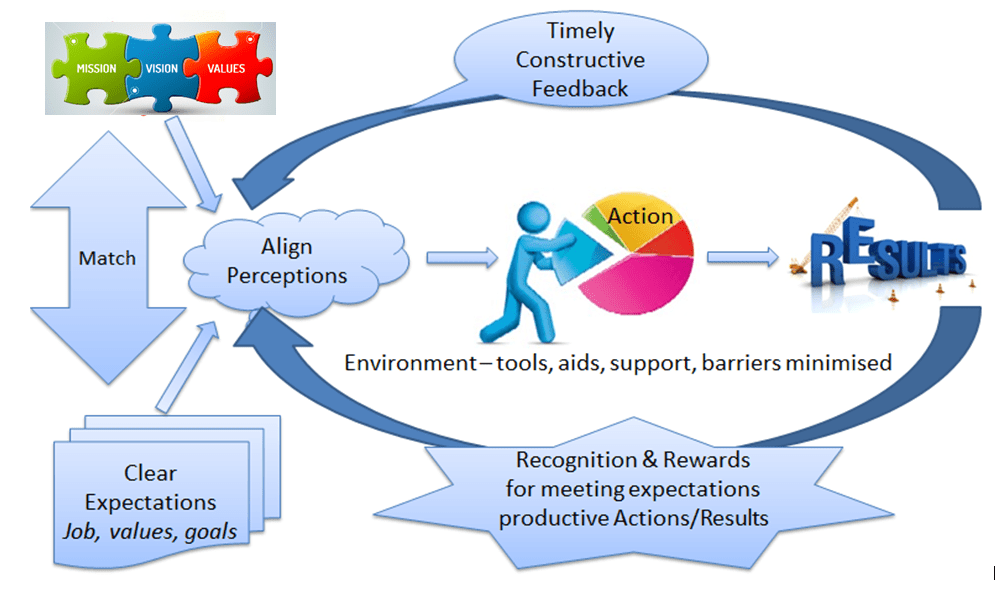What is Organizational Culture
Organizational Culture is the set of beliefs, assumptions, symbols, values, priorities, rituals and practices that are shared, mostly unconsciously, amongst members of an organization.
The concept became popular in the 80’s and is similar to the pre-existing one of Organizational Climate which covers dimensions as organizational identity, values and standards, structure, responsibility, communications, interpersonal and supervisor relations, support systems, reward and benefit systems, conflict, and risk management.
Organizational culture/climate is an unseen normative force that promotes ‘groupthink’ , shapes behaviour and evolves over time.

Does Organizational Culture influence Performance?

It has been suggested that organizations with ‘strong’ (widely shared) cultures are more effective, so long as they are adaptive to their environment.
Studies have looked for the particular factors that predict success. Emmanuel Ogbonna and Lloyd C. Harris in their 2000 study reported in the International Journal Of Human Resource Management found distinct differences in the types of culture associated with organisational performance.
They surveyed 1000 medium and large sized UK firms on culture and used measures of customer satisfaction, sales growth, market share, competitive advantage, and sales volume as measures of performance.
They found that an innovative culture, perceived as dynamic and entrepreneurial; focused on growth, innovation and development, acquiring new resources, meeting new challenges and risk taking to have a moderate link to performance, accounting for over a fifth of the variance in performance. A competitive culture perceived as production and achievement oriented; focused on measurable task and goal accomplishment, with a production orientation, high personal involvement in ‘getting the job done’ had a slightly lower association with performance explaining almost 16% of the variance in performance in the sample group.
In contrast bureaucratic cultures perceived as formal and policy driven; focus on stability, well defined structures and procedures, effective administration and co-ordination, and community based cultures perceived as having high commitment, loyalty and tradition, with a focus on extended family, cohesion, morale and personal mentoring were not linked with performance.
How do you change Organizational Culture?
To manage culture requires an understanding of what drives perceptions and behavior. Culture is not a universal in an organisation. There will always be subcultures across different groupings.
Step 1
In seeking culture change the first step is to identify what over-arching values and actions are needed moving forward to achieve the organisation’s purpose. Is it customer focus? Entrepreneurship? Compliance to exacting standards?

Step 2
Translate this into clear expectations. A set of values and supporting measurable role specific expectations and key performance indicators.
Step 3
Ensure that supporting systems are in place.
Step 4
Ensure that performance is managed according to the expectations. Achievement is recognised and rewarded and non-achievement is dealt with promptly.
Research shows a significant degree of mistrust and difference in perceptions between hierarchical levels in many organisations. This is because leaders tend not to ‘walk the talk’. Instead they manage based on personal relationships rather than communicating clear expectations, monitoring actual outcomes and providing constructive feedback.
ADDITIONAL RESOURCES
USING CORE COMPETENCIES TO SHAPE THE CULTURE
Core competencies that reflect corporate values can be used to shape organizational culture. The values must be clearly expectations, “the way we do things here” . When these behaviours are tracked as part of performance management their importance is clear and they will be adoptedacross the organization. We look at how to set this up in practice.
